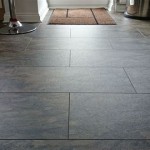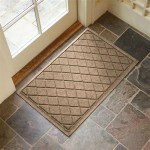If you’re looking to install new hardwood floors in your home, there are a few tips you should keep in mind to ensure a successful installation process. Hardwood floor installation can be a tricky process, and it’s important to plan ahead and prepare for any potential complications. In this article, we’ll discuss some of the key tips for installing hardwood floors so you can get the job done right the first time.
1. Choose the Right Type of Hardwood
The first step in installing hardwood floors is to choose the right type of wood for your project. Different types of wood have different characteristics, and it’s important to select the right type for your needs. Different types of wood are better suited for different rooms and different levels of traffic. For example, solid hardwood is a great option for high-traffic areas, while engineered hardwood is more suited for rooms with lower levels of traffic. Consider your needs and the type of environment you’re installing the hardwood in before making a selection.
2. Prepare the Subfloor
Before beginning the installation process, you’ll need to make sure the subfloor is properly prepared. The subfloor should be level, clean, and free of debris. If the subfloor is not level, you’ll need to use self-leveling compound to fill in any low spots or cracks. You’ll also need to make sure that the subfloor is dry before beginning the installation process.
3. Measure and Cut the Hardwood
When it comes to installing hardwood floors, proper measurements and cuts are essential. You’ll need to measure the room and cut the wood planks to fit. When making measurements and cuts, be sure to leave a small gap between each plank to allow for expansion and contraction. This gap should be around 1/4 to 1/2 inch.
4. Install a Vapor Barrier
A vapor barrier is a thin sheet of plastic that should be installed between the subfloor and the hardwood. This will help protect the hardwood from moisture and humidity, and it will also act as a barrier against the floor squeaking. When installing the vapor barrier, make sure it is completely sealed and free of any gaps or holes.
5. Use the Right Adhesive
Using the right adhesive is key when installing hardwood floors. Most types of hardwood require a specific type of adhesive, so you’ll need to make sure you select the right product for your project. Make sure to read the instructions on the adhesive container and follow all safety precautions.
6. Clean Up After the Installation
Once the installation is complete, you’ll need to make sure you clean up the area properly. Sweep up any debris or dust, and make sure all the adhesive is completely dry before walking on the hardwood floors. You should also inspect the area to make sure there are no gaps or cracks in the hardwood.
7. Care and Maintenance
After installing your hardwood floors, it’s important to take proper care of them. Regularly vacuum or sweep the floors to remove dirt and dust, and use a damp mop to clean up spills. Be sure to use the appropriate cleaners and products for hardwood floors to avoid damaging the surface. Additionally, keep furniture and other items off the hardwood to avoid scratches.
With these tips in mind, you’ll be well on your way to a successful hardwood floor installation. Just remember to plan ahead, prepare the subfloor, and use the right type of adhesive. Also, don’t forget to properly care for and maintain your hardwood floors after installation.















Related Posts








